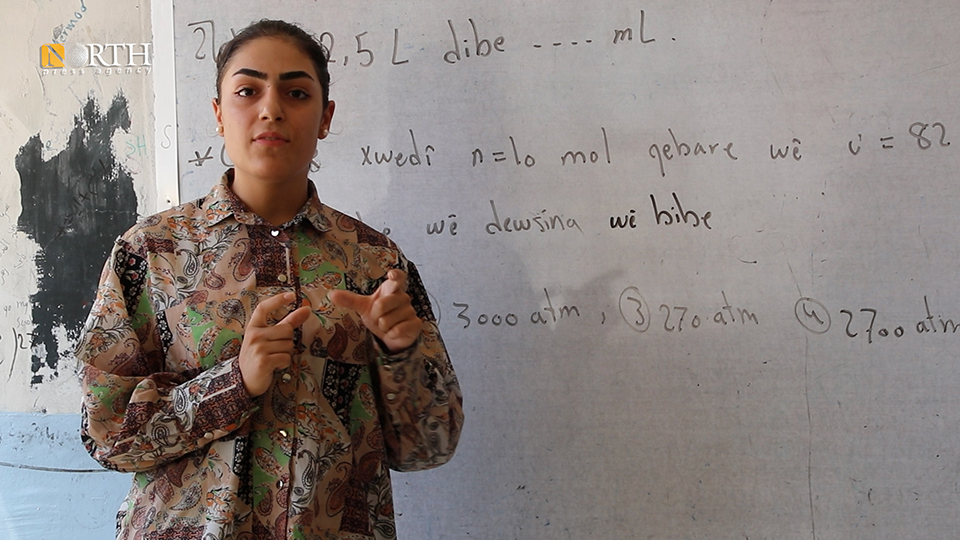Young girl takes pride in learning in Kurdish in Syria’s Qamishli
QAMISHLI, Syria (North Press) – Yasmin Ibrahim, 18, a senior high school student loves learning no matter what language is used around the world. However, she feels learning in her mother tongue, Kurdish language, is the best.
Ibrahim exceled and achieved full marks in the scientific branch curricula in the schools of the Autonomous Administration of North and East Syria (AANES) in the city of Qamishli, northeastern Syria.
After establishing itself in northeast Syria in 2014, the AANES introduced multilingual education. The Kurdish-majority areas have a Kurdish-based curriculum, with at least one class in Arabic, and vice-versa. Kurdish is also made co-official with Arabic on administrative level.
The AANES has also encouraged and facilitated education in other minority languages, such as Armenian. Syriac was made the third co-official tongue of northeast Syria.
Ibrahim lives with her parents and three siblings in a house in the al-Gharbi neighborhood in Qamishli. Her father works as a taxi driver in the city.
“At the beginning of the third grade, I started to learn Kurdish language, as it was included in the curriculum,” Ibrahim told North Press. “There wasn’t any hindrance or difficulty in learning.”
In middle school, the Kurdish language became essential in the curriculum along with Arabic and English, according to the student.
In 2015-2016, the AANES began including its educational curricula in the educational process for the first three grades, gradually including all grades.
The Education Board of the AANES revealed that 6,126 students performed twelfth grade exams this year in both scientific and literary branches. The Board estimated the success rate at 80 percent for the academic year of 2022-2023.
The number of students who applied for twelfth grade exams in the scientific branch was 953 students, of whom 872 applied for exams in Kurdish and 81 in Arabic.
As for the literary branch, 963 student applied for exams, of whom 766 were in Kurdish and 197 in Arabic. The middle school students who applied for exams reached 4,210, of whom 3,049 applied in Kurdish and 1,161 in Arabic, according to the Media office of the Education Board.
The AANES adopted its own educational system since its establishment, designating Kurdish and Arabic as two main languages. However, it is not officially recognized by the Syrian government due to political disputes between the two.
Studying for the twelfth grade is not easy, especially the scientific branch, nevertheless, Yasmin managed to excel and get full marks through organizing her time, putting in great effort and perseverance.
“For me, learning is great in all its subjects, such as Physics, Chemistry, and Science,” she noted. “Learning in Kurdish is the best.”
Many people have varying opinions on the future of students graduating from AANES schools, being not recognized by the government, but Ibrahim has a her own opinion. She says “I see no objection in learning in my mother tongue,” adding, “Since we live in this area, it isn’t important if my certificate is not recognized abroad. What matters to me is that I learn in my mother tongue, which was a dream for us for many years.”
She is not considering to get a job based on her certificate. “The important thing for me is that I learned the AANES curricula, my region’s culture. I am happy with that,” she stressed.

